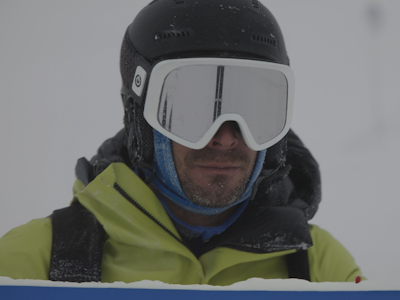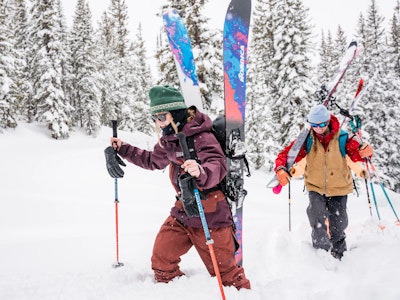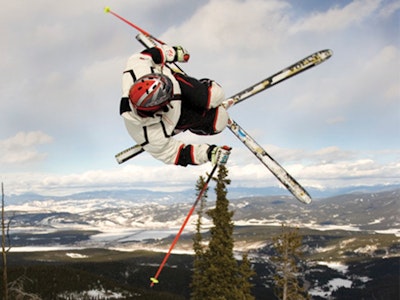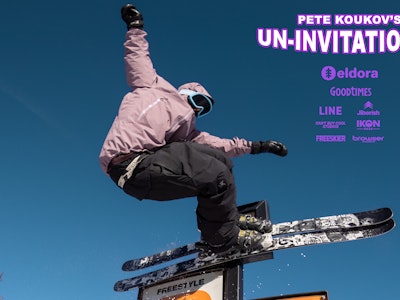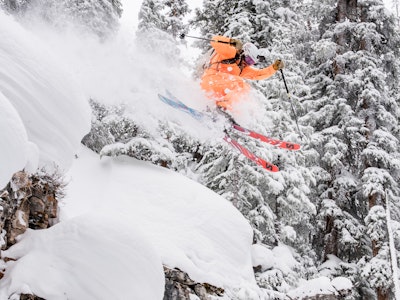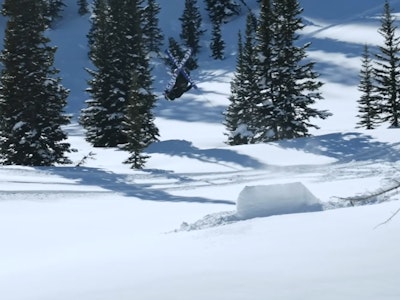Home | Q&A with Bobby | Tom Wallisch about Bobby | Jon Olsson about Bobby | Sean Pettit
FS: Did you have any formal training while growing up in Breckenridge?
BB: I did moguls for Team Summit for a year and a half. My mom really wanted me to do some sort of mogul program to get some structure in my life. I worked with Chris Carson, which was really cool because he knew I wasn’t really into the moguls, but more into the jumps. So he helped me form my path of where I wanted to take my skiing and set me up with my first sponsor, which was Atomic. From then on, I was in the park doing my own thing with my friends.
Were you involved in any formal training like gymnastics to hone your skills?
I used to rollerblade a bunch. [laughs] I go down to the skatepark with my friends and hit big jumps. But then my parents got a trampoline and every day I jumped on it with my friend Will Berman. We’d jump for four hours every day after school and we’d have night sessions on the weekends. That’s pretty much all we did. I think that contributed to a lot of my skiing because of how key air awareness is in what we do. So, Will and I sessioning for four years straight was key.
What goes through your mind at the top of a start gate?My first thought is that I have to have my music going. I try not to think about the run too much. I need a clear mind going into the run. Hopefully in practice I trained hard enough to get my run. Then just drop in.
I’ve heard you are superstitious.
There are some weird things that I do before my runs. I’m sure if you watch the video of the X Games Big Air, you’d see me tap my head three times, then my ski three times, then the wood three times. It just calms me down and chills me out. I’m always superstitious for some reason but I never let it get the best of me. Just try and do my little ritual and move on. When I do it, I feel like I have the ability to do what I came to do.
Check out the entire photo gallery from the feature.
So you’re not a visualizer then?
Practice is where I mostly visualize and figure out what I’m going to do. But when it comes time to drop in, I think about it one time and then try and stay clear and loose. That’s the main thing that happens to everyone is that they get tight and the pressure gets to them and it doesn’t always go well.
Would you say you’re mainly competing against the field, or yourself?
I try to compete against myself, but when you see someone drop the most insane run like TJ’s 1620 at the X Games Big Air, you have to think about what you can do to better your run or better yourself. When the time comes and you have to step it up, you’ve got to do it. You’re always looking at your competition but I always want to go into a contest for myself and do the best I can.
How did you feel when you won your first medal at the X Games?
The win at the big air was insane because it was my first X Games gold and that’s something I’ve wanted for so long. All my friends and family were there. It was the best moment of my life I’d have to say. I was having the most fun and sessioning with my best friends. It was just an all-time ultimate session.
You did two new double that night. How do you visualize new tricks?
Skiing and double flips are just natural progression. You do a cork 7, then a cork 9, then a double cork 10, double cork 12, double cork 14 and so on. Look at a trick and if you think it can work, you visualize the steps up to it. The switch double misty 12 was one of the scariest things I’ve done. It’s so blind but I went for it and it worked out and I was lucky that I got to my feet. I’m sure there are doubles out there that don’t always go well. But it’s pretty much a progression, stepping up the ladder each time you do a trick.
Do you think that you are helping legitimize the sport to the mainstream media?That’s my goal for myself and skiing: To bring skiing into the limelight of mainstream sports. Skateboarding and snowboarding are getting there with Ryan Sheckler and Shaun White. I’d really like to take skiing into some bigger opportunities in the future while keeping it in the most positive light. Portraying that it is awesome while having a good time, but proving we are training incredibly hard to do what we do.
Now that you’ve made a career out of skiing, has skiing changed for you?
For sure. I’m trying to take this as seriously as possible because it’s what I want to do for a while. After I got hurt this year, I was in the gym almost every day trying to eat healthy and live a healthier lifestyle because it’s what’s going to keep me in the game for longer. It’s key to live a healthy lifestyle if you want to ski and compete at the highest level.
Speaking of injury, how hard was that for you to deal with?
I broke my back, which was insane. I was so bummed. In the hospital in Sun Valley they told me I couldn’t go to JOSS because it would be too soon, and my heart just sank. But it happens to everyone. Injuries are scary and I was glad I bounced back. It made me see that I have to be on top of the game and working out all the time and to take advantage of the time while I’m not hurt.
Check out the exclusive outtakes from Bobby and Sean's studio shoot.
What made you do your triple flip in Alaska after your injury?
Honestly, I don’t know. I don’t even remember doing it. I blacked out on stokeness. The session was going so well and everyone was killing it so hard that I don’t even know what triggered my brain to do it. I just dropped in and did it and moved on. I had a good time doing it.
How important is it to just go ski for yourself?
That’s so important. I have to go all the way back to those days at Breckenridge when I would ski with my friends. Last year I probably got 10 of those days in, but you have to make time for those chill days where you go out and have fun because without those you’d lose the joy of skiing. When you get caught up in the contest scene and media and interviews and movies you kind of lose sight. You have to step back and look at everything. Those days open up your eyes and remind you why you’re working so hard and doing what you’re doing. I want to enjoy every day I’m skiing no matter what.

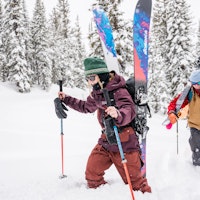
![[GIVEAWAY] Win a YoColorado X Coors Banquet Prize Package](https://www.datocms-assets.com/163516/1764877349-long-live-local-cooler-bag2.jpeg?w=200&h=200&fit=crop)
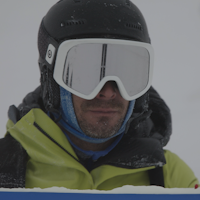
![[GIVEAWAY] Win a YoColorado X Coors Banquet Prize Package](https://www.datocms-assets.com/163516/1764877349-long-live-local-cooler-bag2.jpeg?auto=format&w=400&h=300&fit=crop&crop=faces,entropy)
